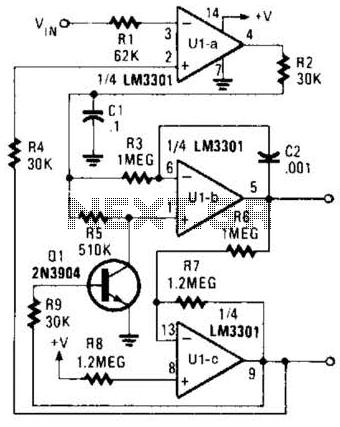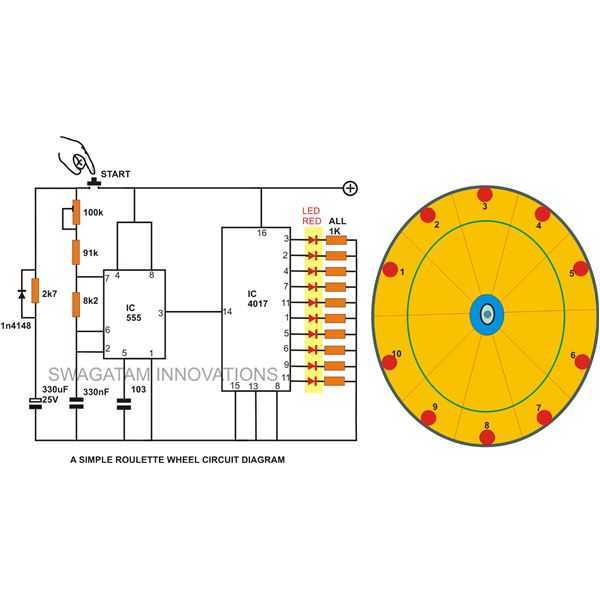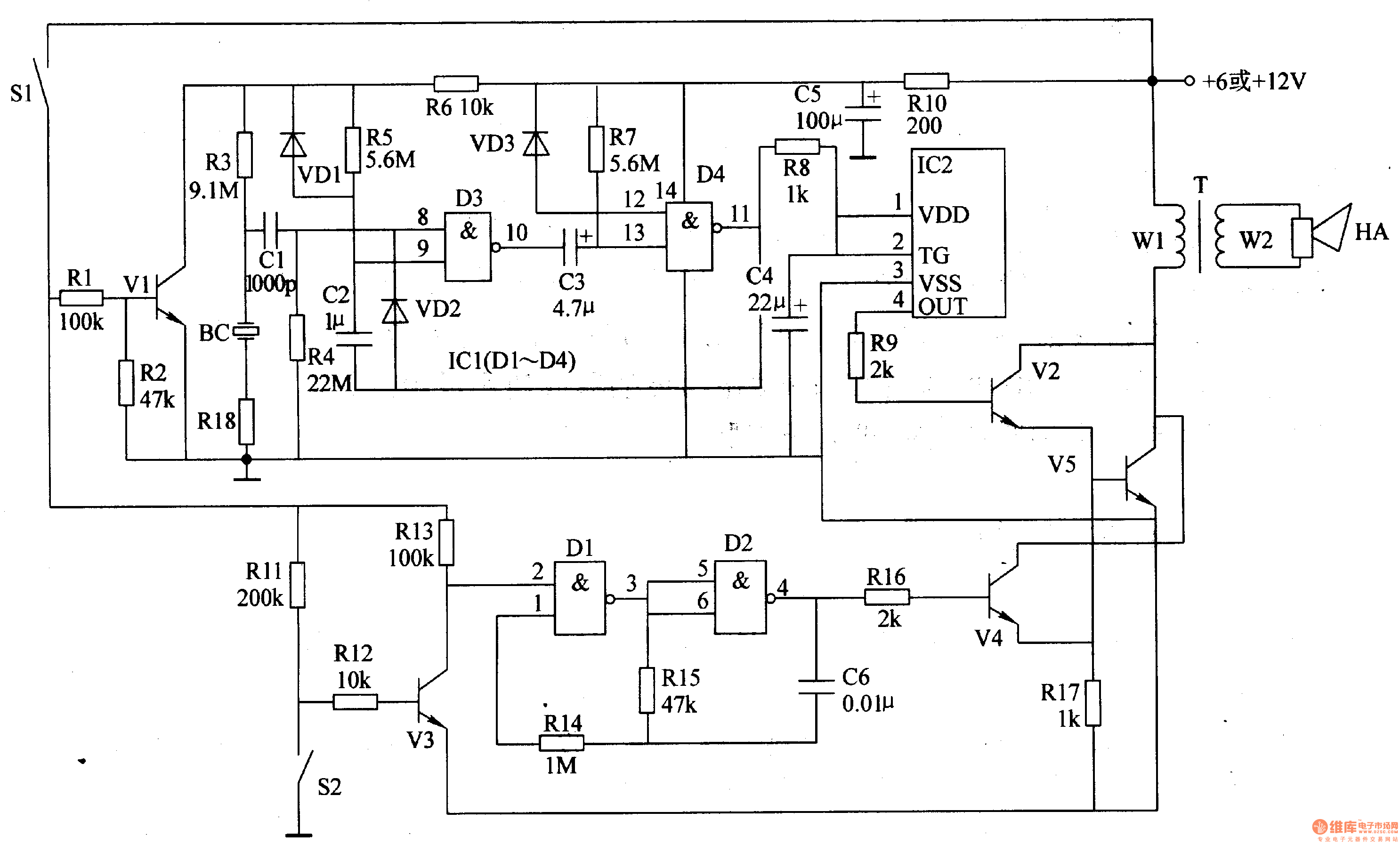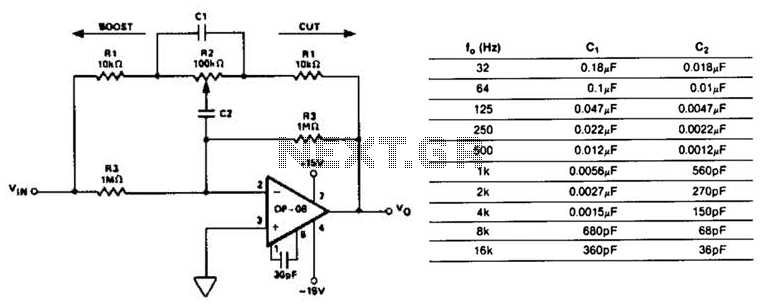
Phase-Locked Loop Circuit

The Phase-Locked Loop (PLL) will synchronize with an input signal, providing both triangle and square wave outputs. A quad operational amplifier can be utilized in this circuit, making it suitable for audio and low-frequency radio applications.
The Phase-Locked Loop (PLL) is a critical component in various electronic systems, particularly in communication and signal processing. It functions by locking onto the frequency and phase of an input signal, enabling the generation of stable output waveforms. In this configuration, the PLL can produce both triangle and square wave outputs, which are essential for different applications, including modulation and waveform generation.
The use of a quad operational amplifier in this circuit enhances its versatility and performance. Quad op-amps, which contain four independent op-amps in a single package, provide the necessary signal conditioning and amplification required for effective PLL operation. They are particularly beneficial in audio and low-frequency (LF) radio applications, where signal integrity and fidelity are paramount.
In a typical PLL circuit, the input signal is fed into a phase detector, which compares the phase of the input signal with that of a feedback signal derived from the output. The phase detector generates an error signal that is then filtered and used to adjust the voltage-controlled oscillator (VCO). The VCO generates the output signal, which is fed back to the phase detector to maintain synchronization.
The triangle wave output can be utilized in applications requiring linear modulation, while the square wave output is suitable for digital signal processing and clock generation. The selection of output type is determined by the specific requirements of the application, whether it be for audio synthesis, frequency modulation, or other signal processing tasks.
Overall, this PLL configuration with a quad op-amp is a robust solution for generating stable waveforms across a range of frequencies, making it an invaluable tool in modern electronic design. The PLL will lock onto an input signal. Both triangle- and square-wave outputs are available. A quad op amp can be used in this circuit, which should be useful in the audio and LF radio region.
The Phase-Locked Loop (PLL) is a critical component in various electronic systems, particularly in communication and signal processing. It functions by locking onto the frequency and phase of an input signal, enabling the generation of stable output waveforms. In this configuration, the PLL can produce both triangle and square wave outputs, which are essential for different applications, including modulation and waveform generation.
The use of a quad operational amplifier in this circuit enhances its versatility and performance. Quad op-amps, which contain four independent op-amps in a single package, provide the necessary signal conditioning and amplification required for effective PLL operation. They are particularly beneficial in audio and low-frequency (LF) radio applications, where signal integrity and fidelity are paramount.
In a typical PLL circuit, the input signal is fed into a phase detector, which compares the phase of the input signal with that of a feedback signal derived from the output. The phase detector generates an error signal that is then filtered and used to adjust the voltage-controlled oscillator (VCO). The VCO generates the output signal, which is fed back to the phase detector to maintain synchronization.
The triangle wave output can be utilized in applications requiring linear modulation, while the square wave output is suitable for digital signal processing and clock generation. The selection of output type is determined by the specific requirements of the application, whether it be for audio synthesis, frequency modulation, or other signal processing tasks.
Overall, this PLL configuration with a quad op-amp is a robust solution for generating stable waveforms across a range of frequencies, making it an invaluable tool in modern electronic design. The PLL will lock onto an input signal. Both triangle- and square-wave outputs are available. A quad op amp can be used in this circuit, which should be useful in the audio and LF radio region.





